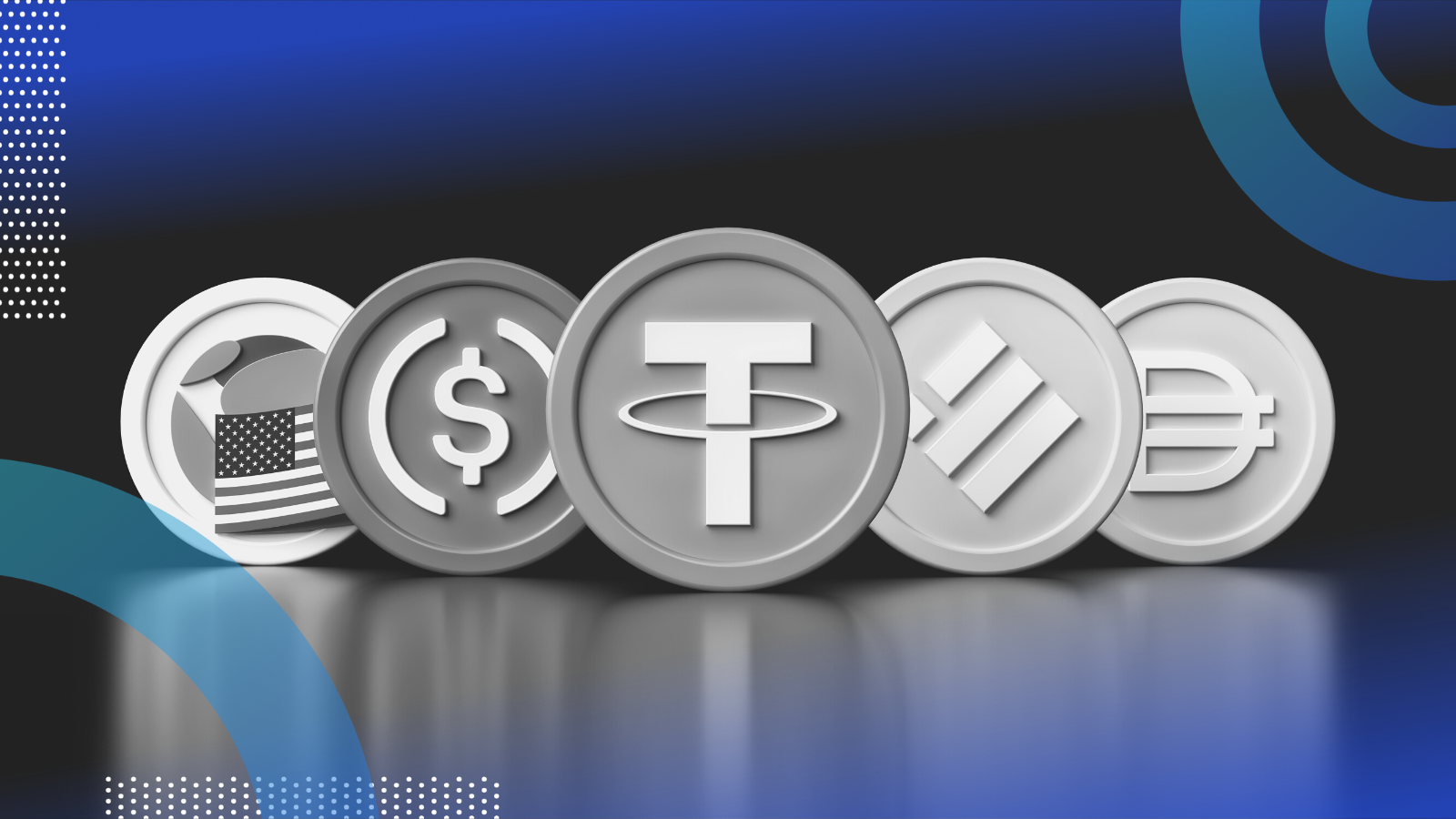
Exploring Stablecoins: Risks and Rewards
Category: Crypto Exchanges
In the fast-moving world of cryptocurrency, stablecoins have emerged as a bridge between the volatility of digital assets and the stability of traditional currencies. But while they offer numerous benefits, they also come with unique risks every investor should understand.
This article explores the risks and rewards of stablecoins, helping you make informed decisions in your crypto journey.
WHAT ARE STABLECOINS?
Stablecoins are cryptocurrencies pegged to stable assets, such as the U.S. dollar, euro, or gold. Unlike Bitcoin or Ethereum, stablecoins aim to maintain a consistent value, making them ideal for transactions, savings, and hedging against volatility.
REWARDS OF USING STABLECOINS
Price Stability
The primary benefit of stablecoins is their price stability. Whether you're trading, saving, or moving funds between platforms, stablecoins let you avoid the extreme swings seen in other cryptocurrencies.
Efficient Cross-Border Payments
Stablecoins eliminate the delays and fees associated with traditional international transfers. You can send money globally in minutes, 24/7, no bank needed.
DeFi and Yield Opportunities
Stablecoins are widely used in decentralized finance (DeFi) for lending, borrowing, and earning interest. Platforms like Aave, Compound, and Yearn Finance let users earn attractive yields on stablecoin deposits.
Fiat On/Off Ramp
They act as a smooth on-ramp to crypto: letting users cash in and out of the market without needing to convert to fiat every time.
Hedging Against Volatility
Traders often move funds into stablecoins during market downturns to protect portfolio value without leaving the crypto ecosystem.
RISKS OF STABLECOINS
Centralization & Counterparty Risk
Many popular stablecoins (like USDT and USDC) are backed by reserves held by centralized entities. This raises questions about transparency, auditing, and trust in the issuer.
Regulatory Uncertainty
Stablecoins are under increasing scrutiny by regulators worldwide. Governments are concerned about their use in illicit activities, their impact on national currencies, and the systemic risk they pose.
Depegging Risk
Stablecoins are meant to stay pegged to a value (e.g., $1), but depegging events can occur. If the backing reserves are mismanaged, the coin can lose its peg, as seen with TerraUSD (UST), which collapsed in 2022.
Smart Contract Vulnerabilities
Algorithmic and DeFi-based stablecoins rely on complex code and protocols. Bugs or exploits in smart contracts can lead to hacks and fund losses.
Inflation Exposure
If a stablecoin is pegged to an inflating currency like the USD, users are still subject to fiat currency depreciation over time.
POPULAR STABLECOINS TO KNOW
• USDT (Tether): Most widely used: but historically criticized for transparency issues.
• USDC (USD Coin): Issued by Circle, with regular audits and high trust.
• DAI: A decentralized, overcollateralized stablecoin on Ethereum.
• TUSD (TrueUSD): Fully-backed and regulated.
• FRAX: A hybrid algorithmic stablecoin with partial collateral backing.
HOW TO USE STABLECOINS SAFELY
• Stick to reputable, audited stablecoins
• Avoid putting all funds in one stablecoin
• Use hardware wallets or reputable DeFi protocols
• Stay updated on regulatory news
• Understand the type of backing (fiat, crypto, algorithmic)
SUMMARY
Stablecoins play a critical role in the crypto ecosystem, offering a balance between traditional finance and blockchain innovation. While they provide useful benefits: from stability to DeFi access, they also come with risks that demand caution.
As adoption grows and regulations evolve, stablecoins could become the backbone of mainstream crypto finance, or face tighter control. Either way, understanding their mechanics is essential for anyone navigating digital finance today.
This article explores the risks and rewards of stablecoins, helping you make informed decisions in your crypto journey.
WHAT ARE STABLECOINS?
Stablecoins are cryptocurrencies pegged to stable assets, such as the U.S. dollar, euro, or gold. Unlike Bitcoin or Ethereum, stablecoins aim to maintain a consistent value, making them ideal for transactions, savings, and hedging against volatility.
REWARDS OF USING STABLECOINS
Price Stability
The primary benefit of stablecoins is their price stability. Whether you're trading, saving, or moving funds between platforms, stablecoins let you avoid the extreme swings seen in other cryptocurrencies.
Efficient Cross-Border Payments
Stablecoins eliminate the delays and fees associated with traditional international transfers. You can send money globally in minutes, 24/7, no bank needed.
DeFi and Yield Opportunities
Stablecoins are widely used in decentralized finance (DeFi) for lending, borrowing, and earning interest. Platforms like Aave, Compound, and Yearn Finance let users earn attractive yields on stablecoin deposits.
Fiat On/Off Ramp
They act as a smooth on-ramp to crypto: letting users cash in and out of the market without needing to convert to fiat every time.
Hedging Against Volatility
Traders often move funds into stablecoins during market downturns to protect portfolio value without leaving the crypto ecosystem.
RISKS OF STABLECOINS
Centralization & Counterparty Risk
Many popular stablecoins (like USDT and USDC) are backed by reserves held by centralized entities. This raises questions about transparency, auditing, and trust in the issuer.
Regulatory Uncertainty
Stablecoins are under increasing scrutiny by regulators worldwide. Governments are concerned about their use in illicit activities, their impact on national currencies, and the systemic risk they pose.
Depegging Risk
Stablecoins are meant to stay pegged to a value (e.g., $1), but depegging events can occur. If the backing reserves are mismanaged, the coin can lose its peg, as seen with TerraUSD (UST), which collapsed in 2022.
Smart Contract Vulnerabilities
Algorithmic and DeFi-based stablecoins rely on complex code and protocols. Bugs or exploits in smart contracts can lead to hacks and fund losses.
Inflation Exposure
If a stablecoin is pegged to an inflating currency like the USD, users are still subject to fiat currency depreciation over time.
POPULAR STABLECOINS TO KNOW
• USDT (Tether): Most widely used: but historically criticized for transparency issues.
• USDC (USD Coin): Issued by Circle, with regular audits and high trust.
• DAI: A decentralized, overcollateralized stablecoin on Ethereum.
• TUSD (TrueUSD): Fully-backed and regulated.
• FRAX: A hybrid algorithmic stablecoin with partial collateral backing.
HOW TO USE STABLECOINS SAFELY
• Stick to reputable, audited stablecoins
• Avoid putting all funds in one stablecoin
• Use hardware wallets or reputable DeFi protocols
• Stay updated on regulatory news
• Understand the type of backing (fiat, crypto, algorithmic)
SUMMARY
Stablecoins play a critical role in the crypto ecosystem, offering a balance between traditional finance and blockchain innovation. While they provide useful benefits: from stability to DeFi access, they also come with risks that demand caution.
As adoption grows and regulations evolve, stablecoins could become the backbone of mainstream crypto finance, or face tighter control. Either way, understanding their mechanics is essential for anyone navigating digital finance today.




